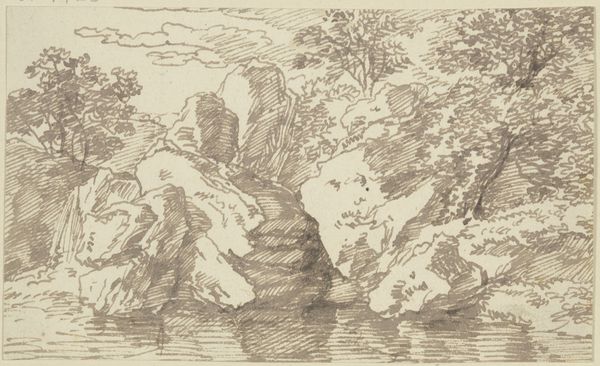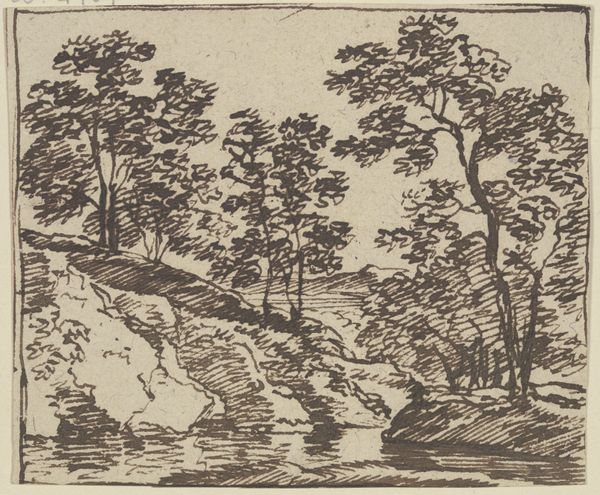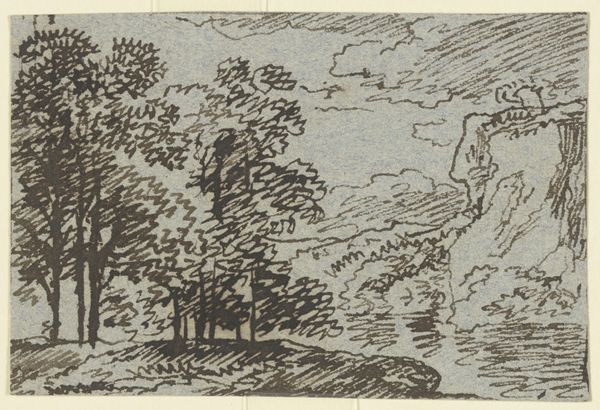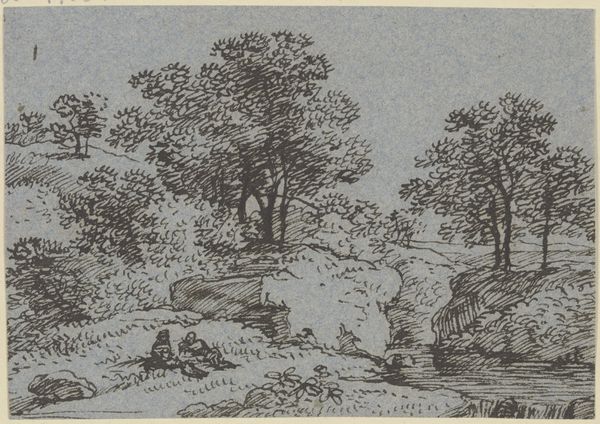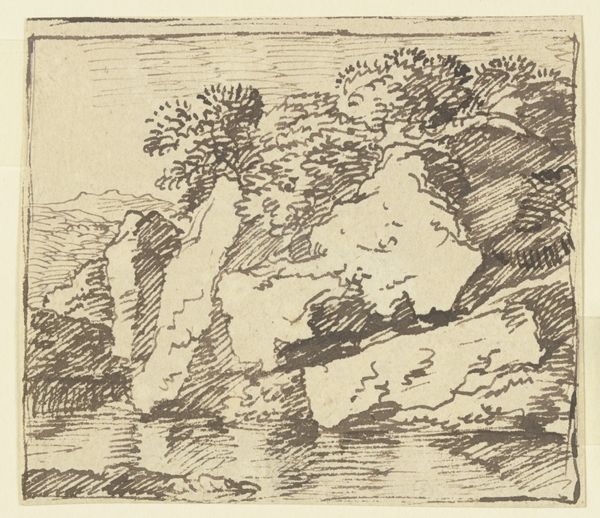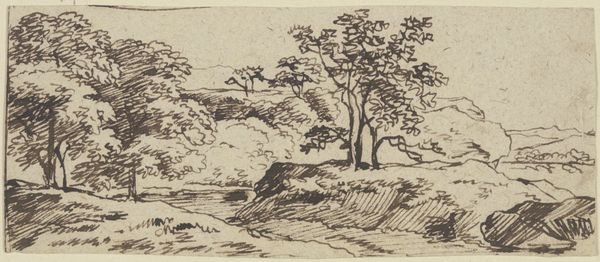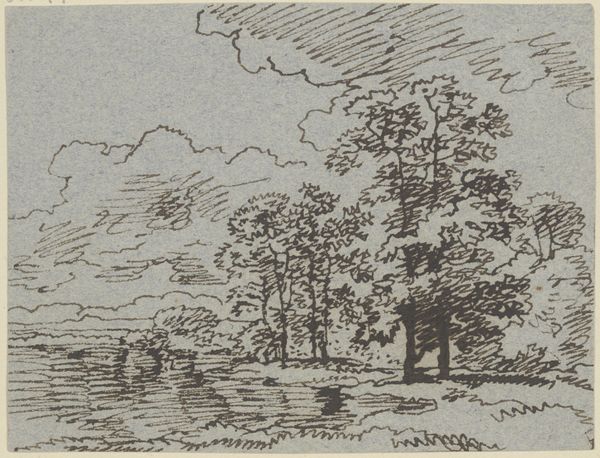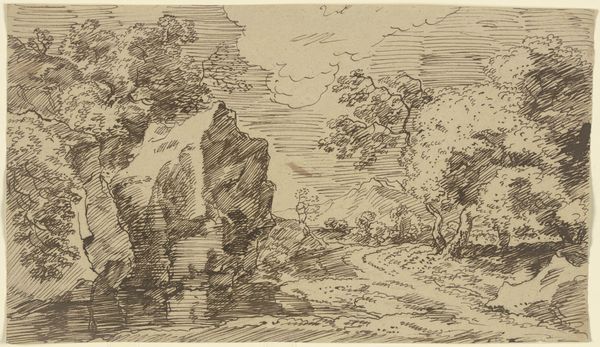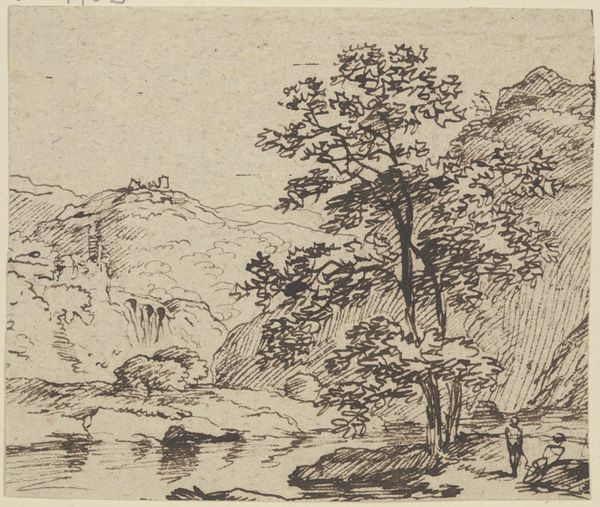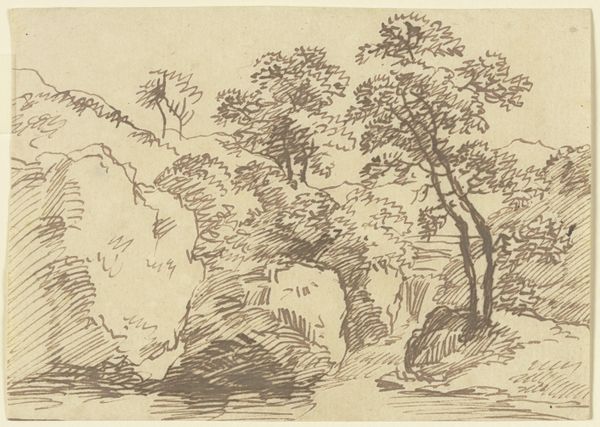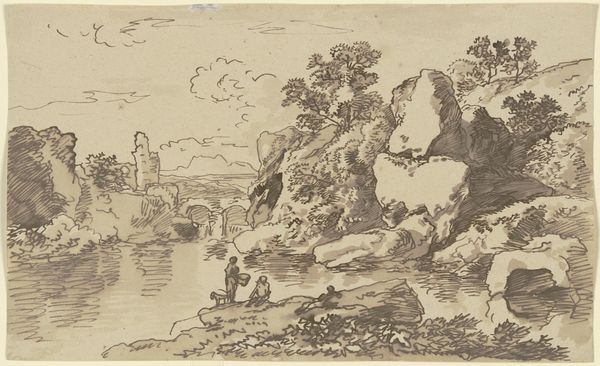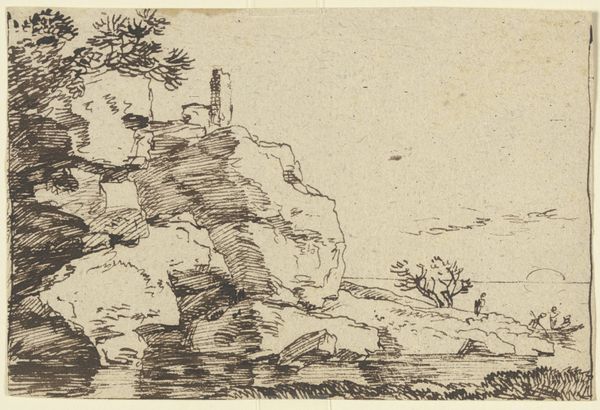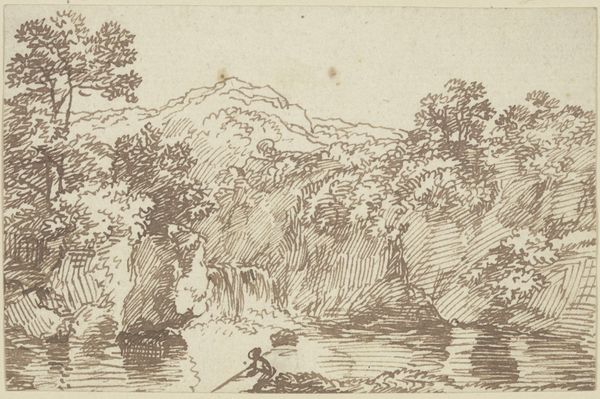
drawing, paper, ink, pen
#
drawing
#
pen drawing
#
landscape
#
paper
#
ink
#
sketch
#
15_18th-century
#
pen
Copyright: Public Domain
Editor: So this is "Uferlandschaft mit Felssporn," or "Riverside Landscape with Rocky Promontory" by Franz Kobell, done with pen and ink on paper. I'm immediately struck by how sketchy it feels; almost like a visual note. What historical context would give me a richer understanding of this quick landscape study? Curator: That "sketchy" feel is key, I think. These kinds of rapidly executed landscapes were becoming increasingly popular in the 18th century as a way for artists, and even amateurs, to directly engage with nature. Think of it as a visual parallel to the rise of scientific observation. How do you see this piece relating to larger ideas about nature during this period? Editor: I guess I hadn't considered its connection to the scientific impulse. So, this isn't just about aesthetic appreciation, it's also about cataloging and documenting? Curator: Precisely! Think about the rise of travel, both for scientific expeditions and leisure. These drawings could serve as both personal mementos and documents of a journey. Did Kobell circulate within artistic or intellectual circles who valued this kind of direct engagement with the world? Editor: He was German, so he may have had contact with other artists in intellectual hubs such as Düsseldorf, famous for the Dusseldorf School of painting which arose in the 19th century. Curator: Interesting. The growth of these movements and ways of representation influenced audiences to observe nature and social contexts, making artwork more culturally relatable. And if the location could be identified with certainty, might that also influence our understanding of the drawing’s original purpose or intended audience? Editor: That makes me think about how place shapes identity. I see the drawing differently now. The quick execution suddenly feels less casual, more like an intentional act of capturing a specific moment and place. Curator: Exactly. Every stroke of the pen tells a story, not just about the landscape, but about the cultural values projected onto it. The popularity and cultural impact of a style is all relative to place, and can therefore be studied with this drawing as an example. Editor: That’s a great perspective. Thanks for illuminating the role of place in this piece!
Comments
No comments
Be the first to comment and join the conversation on the ultimate creative platform.
